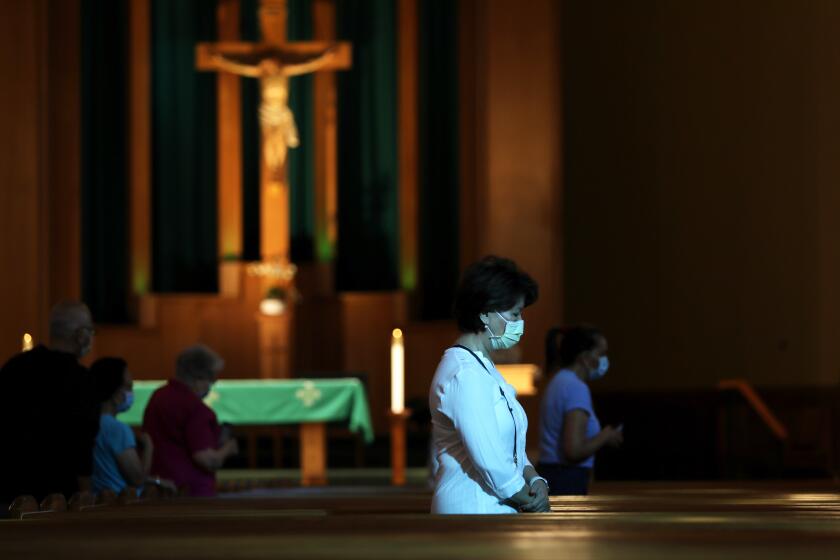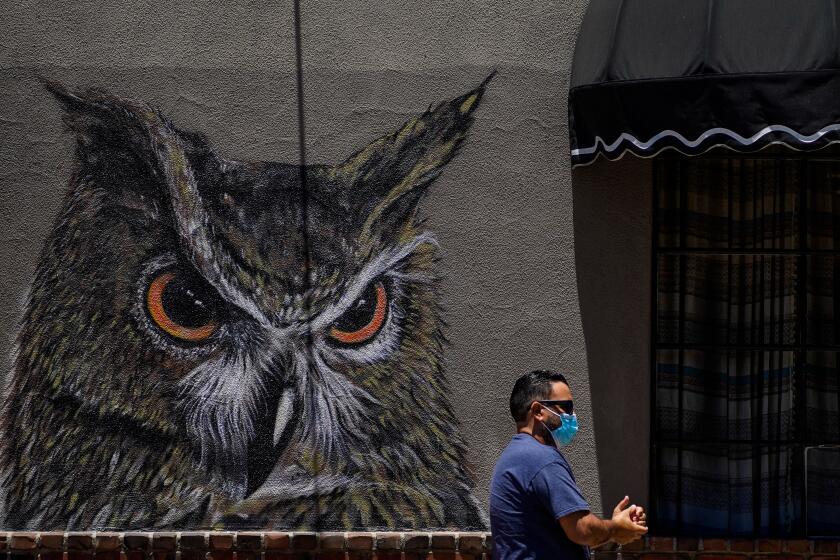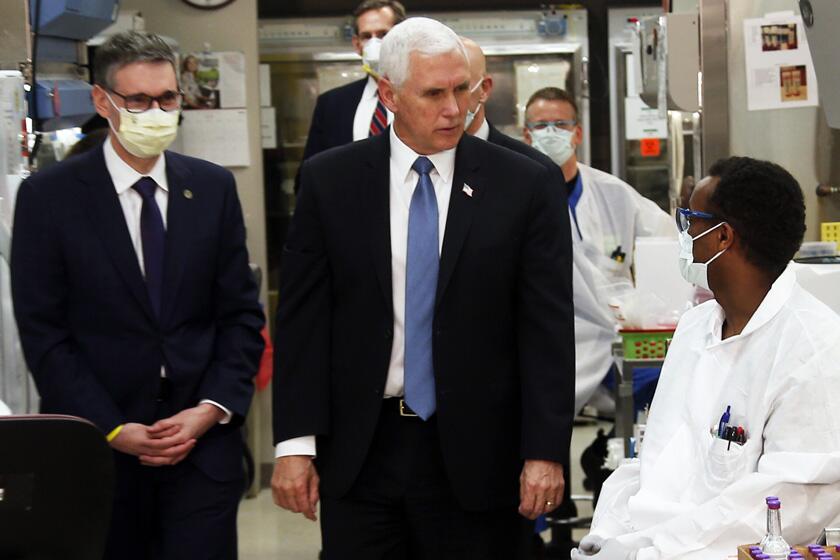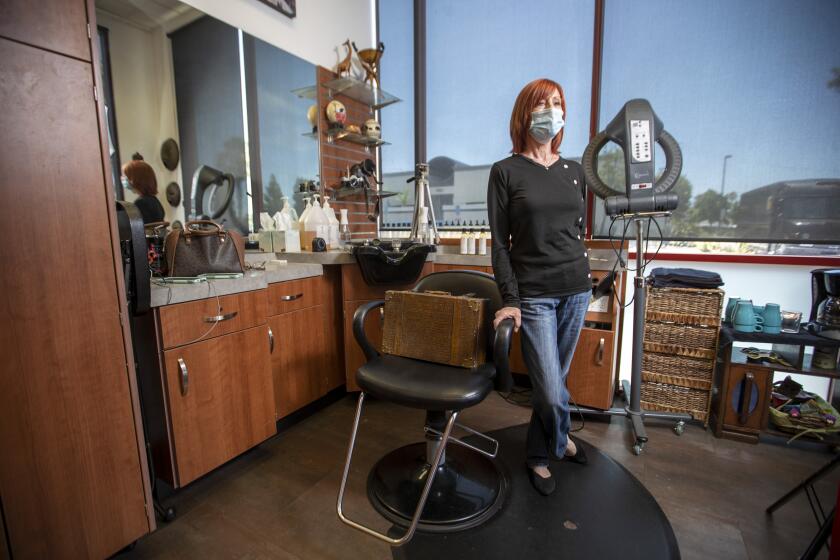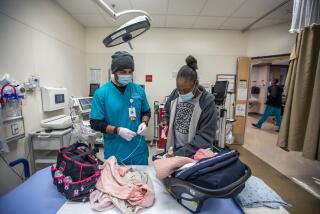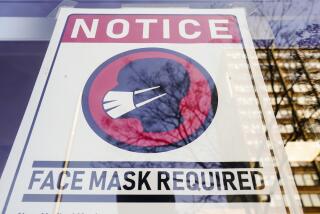An expert debunks myths about wearing face masks to combat the coronavirus
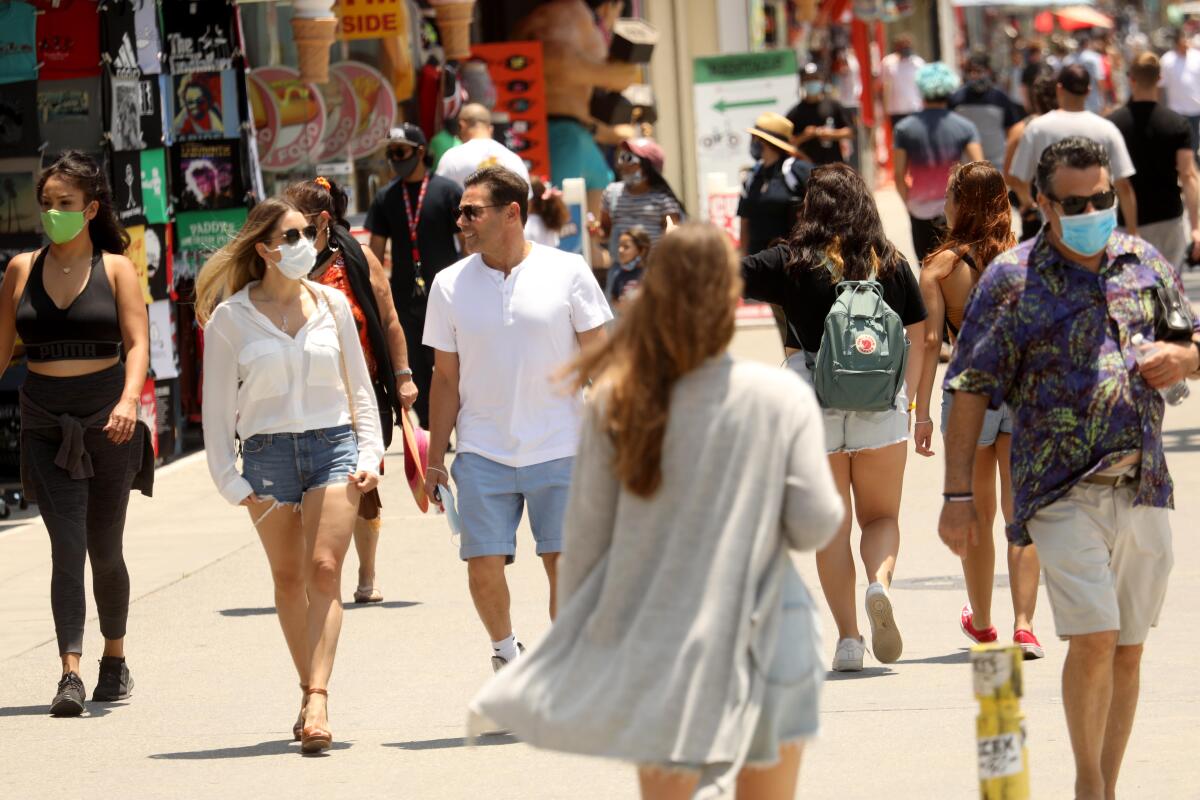
- Share via
SAN FRANCISCO — America’s mainstream medical establishments have given their endorsement: Universal masking is essential for the nation to find its way out of a crippling COVID-19 pandemic and get schools back in session and the economy restarted.
“The data is clearly there, that masking works,” Dr. Robert Redfield, director of the U.S. Centers for Disease Control and Prevention, said Tuesday in a webcast with the Journal of the American Medical Assn. “If we could get everybody to wear a mask right now, I really do think that in the next four, six, eight weeks, we could bring this epidemic under control.”
A CDC study released Tuesday said that by early May, a survey estimated that about 76% of American adults who left the house in the week prior had used a cloth face covering.
Another report by the CDC about two hairstylists at a salon in Missouri showcased masks’ remarkable effectiveness in preventing disease transmission.
The stylists fell ill with respiratory symptoms yet continued to work at the salon for several days, only to later test positive for the coronavirus.
The stylists served 139 clients while they were ill, typically spending 15 to 45 minutes with each of them. Yet not a single client was reported to have become sick, and none of those tested receive a positive test result. The reason? Scientists believe it was because both the hairstylists and their customers wore masks.
There’s a host of myths being circulated that suggest that masks are not needed or are somehow harmful. Dr. Peter Chin-Hong, professor of medicine and an infectious disease specialist at UC San Francisco, recently debunked them during a campus town hall panel discussion.
Mask-wearing in public has become an increasingly pressing and politicized issue as the economy reopens and cases surge across the nation.
Myth No. 1: You don’t need to wear a mask while outside because sunlight kills coronavirus floating in the air
That’s wrong. Sunlight doesn’t immediately zap the coronavirus. While outdoors is generally safer than being indoors, it is possible to get infected while outside. One study identified an outbreak that occurred outdoors in a village in the central Chinese province of Henan.
A recent study determined that 90% or more of the virus would be inactivated after being exposed to 11 to 34 minutes of midday sunlight in most U.S. cities in the summer. But that applies only to viruses deposited on surfaces. “This does not translate to human transmission,” Chin-Hong said.
The Newsom administration is requiring Californians wear face coverings as coronavirus cases continue to rise in the state.
Myth No. 2: You only need to wear a mask if you have symptoms
Incorrect. People with mild symptoms, or who are infected but will never show signs of illness, make up more than half of all COVID-19 cases, Chin-Hong said.
So-called silent spreaders are responsible for the majority of transmission cases, a recent study found. “Furthermore, such silent transmission alone can sustain outbreaks even if all symptomatic cases are immediately isolated,” the authors wrote.
“Talking, yelling, exercising and singing can also spread [virus-carrying respiratory] droplets, in addition to what we focus on, which is coughing and sneezing, when someone is physically ill,” the study found.
Darth Vader, Bane, Lucha Libre wrestlers — and a healthy dose of humor — might get more guys to cover up.
Myth No. 3: Masks reduce blood oxygen levels and increase carbon dioxide levels
False. There have been a number of erroneous social media posts claiming that wearing masks lowers oxygen and increases carbon dioxide levels in the blood, Chin-Hong said.
In fact, all masks provide adequate airflow.
“Just like oxygen can get in, carbon dioxide can safely get out,” he said.
Tests using a device called pulse oximeters have confirmed that wearing masks cause no decline in blood-oxygen levels. Masks are even safely used by patients suffering from severe lung disease.
Californians have expressed anger at politicians over the pandemic. After a second shutdown, many turn anger on each other for not being careful.
Myth No. 4: Anything other than an N95 mask is useless for limiting virus transmission
Not accurate. N95 masks are certainly important in certain hospital settings when healthcare providers are inserting breathing tubes down patients’ throats.
But for the general public, the point is to keep most of the wearer’s potentially infectious respiratory droplets from landing in other people’s eyes, nose and mouth.
A mask helps the wearer avoid infection too: If you come close to an infectious person, a mask will still filter a fair amount of virus particles. Breathing in a smaller amount of the virus may lead to no disease or a mild infection; with no mask at all, you might otherwise inhale a large volume of virus particles, and that can result in severe symptoms or death.
“Any mask can provide a barrier to respiratory droplets,” Chin-Hong said. “Fit and comfort is more important than anxiety about the type of mask you wear in the community.”
Wearing a mask is not about eliminating all risk, however. It’s about reducing risk.
“When I give you a cholesterol medicine ... I’m not telling you you’re never going to get a heart attack. I’m saying it’s going to reduce your risk substantially,” Chin-Hong said as a comparison.
“So the bottom line is: Wear any mask that is comfortable. And don’t obsess about what type of mask you’re wearing,” he added.
A face shield with a drape on the bottom edge can be an alternative. That’s what L.A. County officials require of people whose jobs bring them into regular contact with others but are exempt from wearing a face covering due to a medical condition.
Experts also warn about the use of a specific kind of N95 mask that has a vent that allows a person’s breath to be concentrated when it escapes.
Those masks are intended to protect the person wearing them — such as construction workers wanting to avoid breathing in dust — but are terrible in a pandemic because they funnel a person’s potentially infectious breath outward.
To convert the N95 masks that have vent holes in the front, simply place a piece of tape over the external vent to cover it, health experts said.

More to Read
Sign up for Essential California
The most important California stories and recommendations in your inbox every morning.
You may occasionally receive promotional content from the Los Angeles Times.
